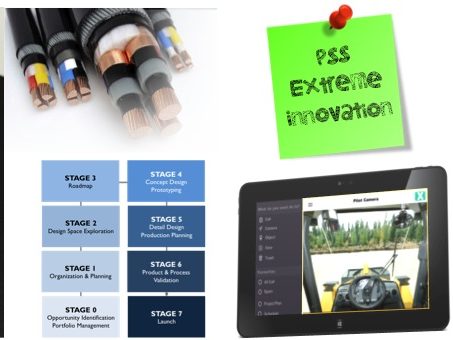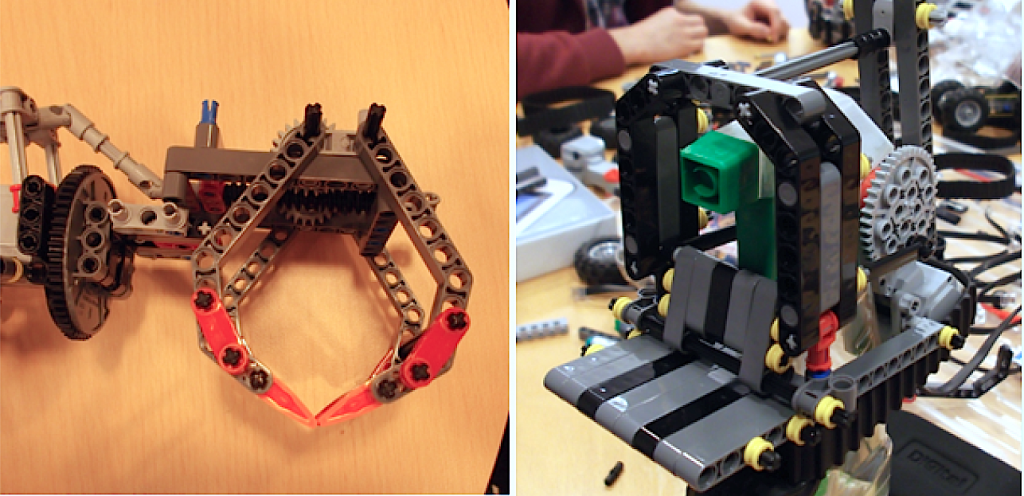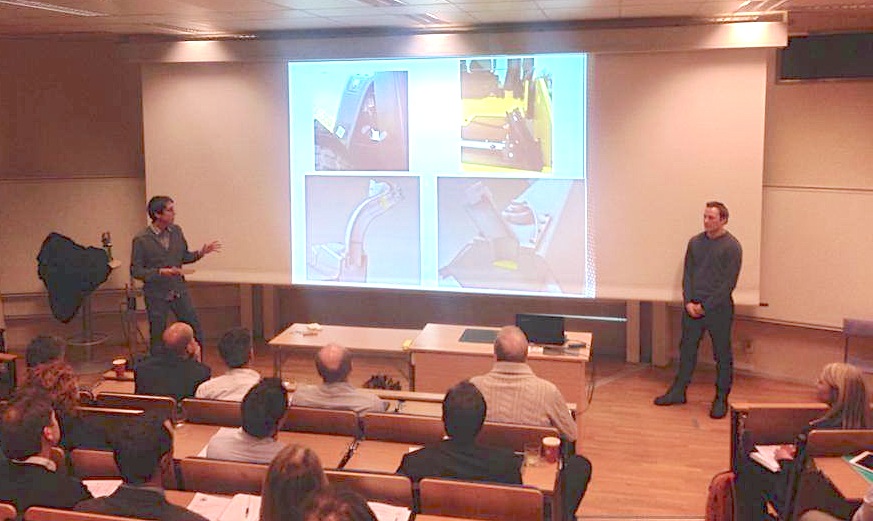
Extreme Product-Service Innovation 2013/14 completed
- Post by: Tobias Larsson
- 5th February 2014
- No Comment
Extreme Innovation happens at BTH
On January 30th students in the MT2534 PSS Extreme Innovation (PSSEI) and MT1485 Innovativ Produktutveckling course presented the outcome of their 4-month projects.
Students in both courses have teamed up and joined forces to perform and carry out real product-service development activities. These have been conducted in collaboration with 3 industrial partners – ABB, Dynapac Compaction Equipment, Volvo Construction Equipment – and with focus on sustainability and innovation.
Projects were guided by the Participatory Product Innovation (P2I) process. At each of its 8 “gates”, students had the opportunity to apply their skills and knowledge in a real industrial development situation, to help companies in:
- Identifying a business opportunity
- Performing needfinding
- Developing and evaluating design concepts
- Creating solution prototypes
- Employing advanced simulation driven design tools
The projects were presented in a room filled with more than 60 people. Among those: teachers, coaches, students, and company representative from the Model Driven Development and Decision Support research profile at BTH.
Here below a short summary of challenges and outcomes of the three projects.
ABB: High voltage cables manufacturing
Team: Oscar Andersson, Björn Hedlund, Marika Jörgensen, Anqi Lu, Anton Molin, Andreas Persson, David Persson, Andrej Smailagic, Sandra Stenberg, Ola Svensson, Philip Wilander.
PSS Design Challenge: The manufacturing of high voltage cables is a non-stop process: several cables have to be linked together by special joints while going through the manufacturing line. However, the material of these joints does not withstand the heat occurring in certain parts of the process. When joints come close to critical areas, heaters have to be switched off, and portions of the cable close to the joints have to be discarded.
Results: The group developed a solution that employs magnetic sensor technology to support the automatic identification of joints in the process line, replacing today’s manual operations. Prototyping and testing activities at the manufacturing site showed that material waste in the process is reduced by more than 80%. Production planning can also be optimized thanks to the information gathered by the sensors.
Volvo Construction Equipment: Urban Mining
Team: Salomeh Mohebbi, Yi Chai, Amanda Hilding, Nori El-Abdouni, David Andersson, Joacim Malm, Kim Karlsson, Joakim Sandin, Zhenqing Gao, Kustrim Qollakaj, Andreas Petersson.
PSS Design Challenge: Urban mining is of great interest today, but it poses several challenges due to the proximity with urban centers, and to the difficulty of operating in narrow environments. The project has focused on proposing an efficient and novel way to improve how valuable metals are harvested in residential and landfills areas.
Results: The need analysis phase showed the importance of communication while operating in the site. To cope with this need, the team developed and prototyped a collaboration app (for tablets) to improve machine coordination and workers communication on the site. Small-scale prototypes of innovative machine concepts also showed how to gather richer information about valuable materials and hazards in the mining site.
Dynapac Compaction Equipment: The Keyless Roller
Team: Oskar Losell, Christofer Hallberg, Martin Miletic, David Winqvist, Joel Rydberg, Frans Johansson, Andreas Samuelsson, Niklas Fernström, Michael Sköld, Yvonne Motyka.
PSS Design Challenge: Big asphalt rollers require several keys to be opened, turned on and operated. What if the users would not need a key at all? The main purpose of the project was to develop a keyless concept to address issues related to safety, vandalism and time efficiency.
Results: The keyless solution prototype is based on a semi passive key. Once the button on the key is pressed, a message is sent to an antenna positioned inside the roller. This activates the electrical system of the machine, and an encrypted message is sent back from the antenna to the key. If the signal is right, all machine locks are unlocked at the same moment. Anti siphoning devices complements this solution, which is packed in a total care offer.
For more information: Associate Professor Marco Bertoni, marco.bertoni@bth.se.




